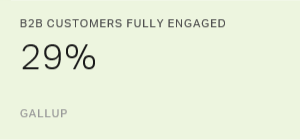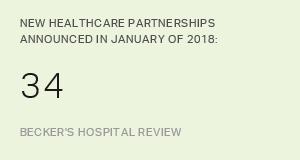Story Highlights
- M&A can be disastrous if companies don't pay close attention to culture
- Strong cultures actually make M&A more challenging
- Predictive analytics can reveal employee sentiment during times of change
History is filled with cautionary tales of brilliant business mergers turning into disaster.
The historic $164 billion merger of Time Warner and AOL in 2001 is now considered by Time Warner's current CEO to be "the biggest mistake in corporate history." Among the many factors that led to its $99 billion loss in the year following the deal, it is widely agreed that an incompatible and antagonistic cultural divide was a factor.
The merger of Daimler-Benz and Chrysler in 1998 is another textbook case. Culture clash emerged between American and German leadership within months of the agreement being finalized.
What is notable in both cases is how quickly culture issues arose, overwhelming the brilliant business logic that initiated the M&A process. The issue is clearly a perennial one: According to a recent Economist Intelligence Unit report, organizational differences and human capital integration issues are two of the most significant challenges faced during M&A.
The reasons for this are obvious and plentiful:
- Experienced senior leaders may leave an organization if they no longer feel connected to its purpose.
- Managers who received mixed messages pass on their confusion to direct reports.
- Vital, loyal customers may seek out competitors when their long-held brand expectations are no longer met.
Retaining Loyal Customers Is Key to Success
As teams merge, customers can experience inconsistencies in their relationship with the brand, threatening their hard-earned loyalty.
Ideally, companies should look for ways to retain the customer brand experience when possible, rather than trying to train long-time customers to adopt new habits.
Marriott's recent acquisition of Starwood in 2016 is a great example of this approach. Starwood's loyalty program, Starwood's Preferred Guest (SPG), has millions of devotees. Marriott recognized the value of this program for both customers and employees and announced upon closing the acquisition that customers of both Marriott Rewards and SPG would enjoy reciprocal status and benefits in both programs.
Rather than placing its customers at risk, Marriott added a huge benefit to the most loyal customers of both companies.
The benefit was available to customers immediately following the deal, leading to a variety of online media outlets promoting how customers could best take advantage of their loyalty points.
Strong Cultures Can Make M&A More Challenging
Culture change for mergers and acquisitions are often lumped together; however, they are quite different experiences for the organizations involved.
In a merger, the two organizations expect to merge cultures, while in an acquisition the acquirer assumes the acquired organization's culture will be absorbed into its own.
The difficulty in bringing two cultures together is particularly apparent in successful consumer brands which, by definition, require strong organizational cultures.
The highest performing employees of both companies have internalized their organization's values, expectations and incentives.
For this reason, the greatest culture clash may come not from your lowest performing employees but your best.
Why Traditional Culture Surveys Are Ineffective
Leaders can proactively shape their organization's culture -- if they use an objective, evidence-based, scientifically valid approach. However, most traditional culture surveys are insufficient for tracking culture change during M&As.
Many "culture assessments" are simply another name for an employee survey -- a kind of personality test for your organization.
These tools are not created to track the gap between the culture you want and the culture you have. What's more, they do not validate the relationship between your culture KPIs -- the primary reason why any organization should care about culture in the first place.
As part of any M&A process, organizations should proactively conduct a qualitative and quantitative analysis, including interviews with executive leadership, to understand the cultures involved and focus on areas of misalignment.
Leaders must identify and own the aspirational culture, purpose and brand they wish to create. From there, employee feedback -- from surveys and interviews -- can be analyzed to identify the gap between the aspirational culture and the current one.
Predictive Analytics and Continuous Monitoring
Especially during periods of major change, leaders need to respond quickly to shifts in employee sentiment. The use of pulse surveys and other technologies can also help organizations gather real-time data on how new processes are rolling out.
Additionally, using predictive analytics, business leaders can identity those areas of business or geographies that are most at risk for culture clash. These "culture hot spots" allow leaders to use limited, targeted resources to increase training and awareness.
The Ultimate Goal: A Profitable M&A
One of my favorite quotes comes from Lou Gerstner, former CEO who oversaw IBM's turnaround in the 1990s, "I came to see, in my time at IBM, that culture isn't just one aspect of the game; it is the game. In the end, an organization is nothing more than the collective capacity of its people to create value."
While all leaders see the importance of culture, a failure to track and manage shifting cultures can lead to a crisis that threatens the profitability of a merger or acquisition.
Gallup has found across industries that those individuals and teams who align closest with the organization's purpose, brand and culture have significantly higher performance on those organization's key performance indicators.
For this reason, it is essential that leaders monitor culture change progress -- particularly as that culture impacts customer experiences.
Gallup can help your organization manage culture change during mergers and acquisitions:




